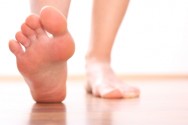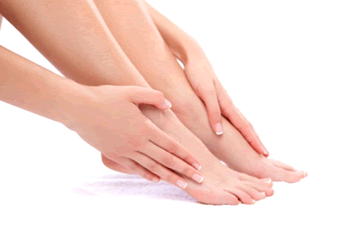Connect With Us
Items filtered by date: October 2015
University of Michigan Loses Bryan Mone due to Broken Ankle
 University of Michigan loses their defensive tackle Bryan Mone due to a broken ankle sustained during practice. The sophomore player was excited to start the season, but will apparently not be able to participate since the injury was significant enough to keep him off the field for a long period of time. Initially sources and Mone’s coach refused to comment for the Wolverines player stating they wanted to keep him away from the media. However, the injury and Mone’s time off this season have since been confirmed.
University of Michigan loses their defensive tackle Bryan Mone due to a broken ankle sustained during practice. The sophomore player was excited to start the season, but will apparently not be able to participate since the injury was significant enough to keep him off the field for a long period of time. Initially sources and Mone’s coach refused to comment for the Wolverines player stating they wanted to keep him away from the media. However, the injury and Mone’s time off this season have since been confirmed.
Broken ankles need immediate treatment. If you have any concerns about your feet and ankles contact one of our podiatrists of The Podiatry Center, P.C. Our doctors will treat your foot and ankle needs.
Broken Ankles
A broken ankle is experienced when a person fractures their tibia or fibula in the lower leg and ankle area. Both of these bones are attached at the bottom of the leg and combine to form what we know to be our ankle.
When a physician is referring to a break of the ankle, he or she is usually referring to a break in the area where the tibia and fibula are joined to create our ankle joint. Ankles are more prone to fractures because the ankle is an area that suffers a lot of pressure and stress. There are some obvious signs when a person experiences a fractured ankle, and the following symptoms may be present.
Symptoms of a Fractured Ankle
- Excessive pain when the area is touched or when any pressure is placed on the ankle
- Swelling around the area
- Bruising of the area
- Area appears to be deformed
If you suspect an ankle fracture, it is recommended to seek treatment as soon as possible. The sooner you have your podiatrist diagnose the fracture, the quicker you’ll be on the way towards recovery.
If you have any questions please feel free to contact our office located in Millburn, NJ. We offer the newest diagnostic tools and technology to treat your foot and ankle needs.
Preventing Blisters for Events Such as Ironman Kona
 With the return of fall weather, it is important to get the feet prepared for blister prevention during the boot weather months. When purchasing shoes it always best to make sure you are getting the correct size and fit of the shoe. A shoe that is too tight will definitely cause blisters on the feet. Rubbing a blister block or silicone based hair serum on blister prone parts of the feet can help reduce friction if you already have shoes that are too tight. On the chance that you are unable to take the proper measures to prevent a blister and get one anyways, make sure to keep durable band aids on you to allow it to heal properly.
With the return of fall weather, it is important to get the feet prepared for blister prevention during the boot weather months. When purchasing shoes it always best to make sure you are getting the correct size and fit of the shoe. A shoe that is too tight will definitely cause blisters on the feet. Rubbing a blister block or silicone based hair serum on blister prone parts of the feet can help reduce friction if you already have shoes that are too tight. On the chance that you are unable to take the proper measures to prevent a blister and get one anyways, make sure to keep durable band aids on you to allow it to heal properly.
Blisters are prone to making everyday activities extremely uncomfortable. If you have any concerns with blisters on your feet contact one of our podiatrists of The Podiatry Center, P.C. Our doctors will treat your foot and ankle needs.
Foot Blisters
Foot blisters develop as a result of constantly wearing tight or ill-fitting footwear. This happens due to the constant rubbing from the shoe, which can often lead to pain.
What are Foot Blisters?
A foot blister is a small fluid-filled pocket that forms on the upper-most layer of the skin. Blisters are filled with clear fluid and can lead to blood drainage or pus if the area becomes infected.
How do Blisters Form?
Blisters on the feet are often the result of constant friction of skin and material, usually by shoe rubbing. Walking in sandals, boots, or shoes that don’t fit properly for long periods of time can result in a blister. Having consistent foot moisture and humidity can easily lead to blister formation.
Prevention & Treatment
It is important to properly care for the affected area in order to prevent infection and ease the pain. Do not lance the blister and use a Band-Aid to provide pain relief. Also, be sure to keep your feet dry and wear proper fitting shoes. If you see blood or pus in a blister, seek assistance from a doctor.
If you have any questions please feel free to contact our office located in Millburn, NJ. We offer the newest diagnostic tools and technology to treat your foot and ankle needs.
Honey Gives Advice from Personal Bunion Problems
 Honey Good, founder of lifestyle website HoneyGood.com recalls her experience on dealing with bunions and bunion surgery later in life. When the pain of bunions first erupted, Good received medical attention from four different doctors with four different opinions that ultimately resulted in bunion surgery. Although Good never went through with it since she already had surgery on her foot once and did not enjoy the experience, she has developed a few tips for women her age. Purchase shoes that are a size bigger or have a larger toe box in addition to putting an insert in your shoe that goes under the big toe. Good has also found that putting a one inch rubber wedge in between in her big toe and index toe helps relieve the pain. She also recommends having your shoes stretched professionally, so you can continue to wear your shoes in addition to keeping your feet healthy.
Honey Good, founder of lifestyle website HoneyGood.com recalls her experience on dealing with bunions and bunion surgery later in life. When the pain of bunions first erupted, Good received medical attention from four different doctors with four different opinions that ultimately resulted in bunion surgery. Although Good never went through with it since she already had surgery on her foot once and did not enjoy the experience, she has developed a few tips for women her age. Purchase shoes that are a size bigger or have a larger toe box in addition to putting an insert in your shoe that goes under the big toe. Good has also found that putting a one inch rubber wedge in between in her big toe and index toe helps relieve the pain. She also recommends having your shoes stretched professionally, so you can continue to wear your shoes in addition to keeping your feet healthy.
Bunion surgery usually occurs after non-surgical methods have proved to be ineffective. If you have any concerns about your feet or ankles contact one of our podiatrists of The Podiatry Center. Our doctors will treat your foot and ankle needs.
What is a Bunion?
A bunion is formed of swollen tissue or an enlargement of boney growth, usually located at the base joint of the toe that connects to the foot. The swelling occurs by the bones in the big toe shifting inward, which impacts the other toes of the foot. This causes the area around the base of the big toe to become inflamed and painful.
Why do Bunions Form?
- Genetics – susceptibility to bunions are often hereditary
- Stress on the feet – poorly fitted and uncomfortable footwear that places stress on feet, such as heels, can cause bunions to form
How are Bunions Diagnosed?
Doctors often perform two tests – blood tests and x-rays – when trying to diagnose bunions, especially in the early stages of development. Blood tests help determine if the foot pain is being caused by something else, such as arthritis, while x-rays provide a clear picture of your bone structure to your doctor.
How are Bunions Treated?
- Refrain from wearing heels or similar shoes that cause discomfort
- Select wider shoes that can provide more comfort and reduce pain
- Anti-inflammatory and pain management drugs
- Orthotics or foot inserts
- Surgery
If you have any concerns please feel free to contact our office located in Millburn, NJ. We offer the newest diagnostic tools and technology to treat your foot and ankle needs.
Laser Treatment Gaining Popularity in Reducing Toe Nail Fungus
 While toenail fungus is estimated to have an effect on nearly 35 million people worldwide, laser treatment for the condition has become increasingly popular. The treatment works by sending wavelengths of light through the nail bed to eliminate fungal spores. Since this occurs by delivering heat into the nail, patients often find warming or pinprick sensations in the area. According to Dr. Alap Shah, “The reason more people are going to it is because it’s preventing people from having to take some of these medications that can be toxic to the liver.”
While toenail fungus is estimated to have an effect on nearly 35 million people worldwide, laser treatment for the condition has become increasingly popular. The treatment works by sending wavelengths of light through the nail bed to eliminate fungal spores. Since this occurs by delivering heat into the nail, patients often find warming or pinprick sensations in the area. According to Dr. Alap Shah, “The reason more people are going to it is because it’s preventing people from having to take some of these medications that can be toxic to the liver.”
While toenail fungus is troublesome to eradicate, it is not impossible. For more information about treatment, consult with Dr. Howard Hyman of The Podiatry Center, P.C. Our doctor will attend to all of your podiatric needs.
Toenail Fungus Treatment
Toenail fungus is a problem which affects many people and is hard to get rid of. Fortunately, there are several methods to go about treating toenail fungus.
Antibiotics & Treatments
Lamisil – is the most commonly effective treatment for toenail fungus. It is available as an antibiotic Terbinafine tablet and cream. Terbinafine is a chemical component which kills fungal growth on the body. Applying regular doses will gradually kill the fungal growth. It is important to keep the area clean and air free.
Talcum powder – applying powder on the feet and shoes helps keep the feet free of moisture and sweat.
Sandals or open toed shoes – wearing these will allow air movement and help keep feet dry. They also expose your feet to light, which fungus cannot tolerate. Socks with moisture wicking material also help as well
Alternative Treatments
There are always surgical procedures that are available for toenail fungus. Some people would like immediate quick removal of toenail fungus. Surgeons will be able to cut through and remove the growth using laser surgery. It is important not to try and remove it yourself. Once removed, your old shoes will need to be replaced to avoid reinfection.
If you have any questions please feel free to contact our office located in Millburn, NJ. We offer the newest diagnostic tools and technology to treat your foot and ankle needs.
Blog Archives
- January 2025
- December 2024
- November 2024
- October 2024
- September 2024
- August 2024
- July 2024
- June 2024
- May 2024
- April 2024
- March 2024
- February 2024
- January 2024
- December 2023
- November 2023
- October 2023
- September 2023
- August 2023
- July 2023
- June 2023
- May 2023
- April 2023
- March 2023
- February 2023
- January 2023
- December 2022
- November 2022
- October 2022
- September 2022
- August 2022
- July 2022
- June 2022
- May 2022
- April 2022
- March 2022
- February 2022
- January 2022
- December 2021
- November 2021
- October 2021
- September 2021
- August 2021
- July 2021
- June 2021
- May 2021
- April 2021
- March 2021
- February 2021
- January 2021
- December 2020
- November 2020
- October 2020
- September 2020
- August 2020
- July 2020
- June 2020
- May 2020
- April 2020
- March 2020
- February 2020
- January 2020
- December 2019
- November 2019
- October 2019
- September 2019
- August 2019
- July 2019
- June 2019
- May 2019
- April 2019
- March 2019
- February 2019
- January 2019
- December 2018
- November 2018
- October 2018
- September 2018
- August 2018
- July 2018
- June 2018
- May 2018
- April 2018
- March 2018
- February 2018
- January 2018
- December 2017
- November 2017
- October 2017
- September 2017
- August 2017
- July 2017
- June 2017
- May 2017
- April 2017
- March 2017
- February 2017
- January 2017
- December 2016
- November 2016
- October 2016
- September 2016
- August 2016
- July 2016
- June 2016
- May 2016
- April 2016
- March 2016
- February 2016
- January 2016
- December 2015
- November 2015
- October 2015
- September 2015
- August 2015
- July 2015
- June 2015
- May 2015
- January 2014
- December 2013
- November 2013
- October 2013
- September 2013
- August 2013
- July 2013
- June 2013
- May 2013
- April 2013
- March 2013
- February 2013
- January 2013
- December 2012
- November 2012
- October 2012
- September 2012
- August 2012
- July 2012
- June 2012
